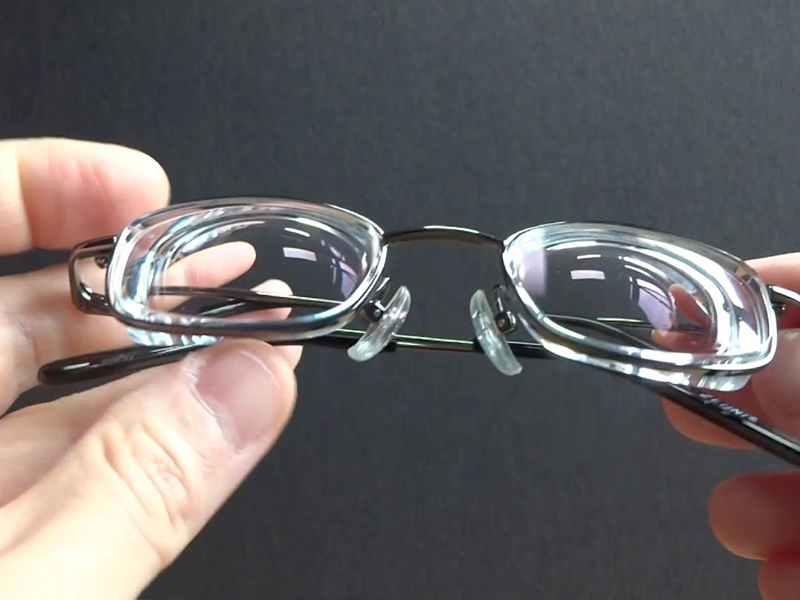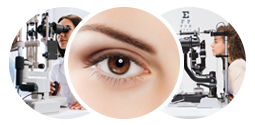What is Progressive Myopia?
Progressive myopia, also known as pathological or high myopia, is a condition where nearsightedness (myopia) worsens over time. Unlike regular myopia, which stabilizes in early adulthood, progressive myopia continues to deteriorate, leading to significant vision impairment. It is commonly diagnosed in childhood and can progress into adulthood, increasing the risk of serious eye conditions such as retinal detachment, glaucoma, macular degeneration, and myopic maculopathy.
Individuals with progressive myopia often experience a rapid decline in their vision, necessitating frequent changes in prescription glasses or contact lenses. In severe cases, high myopia can lead to irreversible vision loss, making early intervention critical.
Causes of Progressive Myopia
The exact causes of progressive myopia are not fully understood, but several factors contribute to its development, including:
- Genetics: A family history of myopia significantly increases the likelihood of developing progressive myopia. If both parents are myopic, the chances of their child developing high myopia are even greater.
- Environmental Factors: Prolonged near-work activities such as reading, working on computers, and using smartphones or tablets for extended periods can contribute to myopia progression. Poor lighting conditions while studying or working may further strain the eyes..
- Lack of Outdoor Exposure: Insufficient time spent outdoors, particularly in natural light, has been linked to higher risks of developing myopia. Natural sunlight is believed to help regulate eye growth and prevent excessive elongation of the eyeball..
- Structural Eye Changes: Progressive myopia is primarily caused by excessive axial elongation of the eyeball, which results in light focusing in front of the retina instead of directly on it, leading to blurred distance vision..
- Improper Vision Correction: Using incorrect prescription glasses or contact lenses, or not wearing corrective lenses when needed, can cause unnecessary eye strain, potentially worsening myopia over time..
- Educational and Lifestyle Factors: Intensive education systems with high academic demands, especially in countries with rigorous schooling, are associated with increased cases of progressive myopia in children and teenagers.
Prevention Strategies
Although progressive myopia cannot always be entirely prevented, several strategies can help slow its progression:
-
Increased Outdoor Time: Research suggests that spending at least 2 hours per day outdoors can reduce the onset and slow the progression of myopia. Sunlight exposure is believed to stimulate dopamine release in the retina, which helps regulate eye growth.
-
Reduced Screen Time and Near Work: Limiting prolonged exposure to screens, books, and other close-up activities can help reduce eye strain. Encouraging children to take breaks from screen time and engage in outdoor play is beneficial.
-
Proper Lighting and Ergonomics: Ensuring adequate lighting while reading or using digital devices, maintaining a proper reading distance (at least 30-40 cm from books and screens), and sitting in an ergonomic posture can reduce stress on the eyes.
-
Taking Breaks: Following the 20-20-20 rule (looking 20 feet away for 20 seconds every 20 minutes) can help reduce eye fatigue and slow myopia progression.
-
Regular Eye Exams: Frequent visits to an eye care professional help monitor and manage myopia progression early. Comprehensive eye exams can help detect changes in prescription needs and identify early signs of complications.
-
6. Balanced Diet and Eye Health: Consuming a diet rich in antioxidants, omega-3 fatty acids, and essential vitamins such as vitamin A, C, and E can promote overall eye health and may help slow myopia progression.
Treatment Options
Various treatment methods are available to manage and slow the progression of myopia:
- Orthokeratology (Ortho-K): Specially designed rigid gas-permeable contact lenses worn overnight temporarily reshape the cornea, improving vision during the day and potentially slowing myopia progression.
- Atropine Eye Drops: Low-dose atropine drops (0.01% to 0.05%) have been shown to effectively slow myopia progression in children. These drops work by relaxing the eye's focusing mechanism and reducing strain.
- Multifocal Contact Lenses: These lenses have different focal points that help control myopia progression by reducing strain on the eyes. Studies suggest that multifocal lenses can slow myopia progression by 30-50%.
- Specialized Myopia Control Glasses:
- Defocus Incorporated Multiple Segments (DIMS) Lenses: These lenses use multiple defocus segments to create myopic defocus in the peripheral retina, which signals the eye to slow its elongation. Studies show that DIMS lenses can reduce myopia progression by up to 60%.
- Highly Aspherical Lenslet (HAL) Lenses: These lenses use multiple lenslets with different focal lengths to create a myopic defocus effect. They are designed to improve peripheral defocus while maintaining clear central vision.
- Peripheral Defocus Glasses: These specialized lenses alter how light enters the eye, reducing hyperopic defocus in the peripheral retina, which can slow myopia progression.
- Bifocal and Progressive Addition Lenses (PALs): These glasses provide different focal zones to reduce strain from near work and can help slow myopia progression in some individuals, though they may be less effective than other specialized lenses.
- Surgical Interventions: In severe cases, procedures such as implantable collamer lenses (ICL) or refractive surgery (such as LASIK or SMILE) may be considered. However, these methods do not halt axial elongation and are usually recommended for adults with stable prescriptions.
- Combination Therapy: Some patients benefit from combining multiple treatment methods, such as using low-dose atropine along with Ortho-K or multifocal contact lenses, to achieve better control over myopia progression.
Risks and Complications of Progressive Myopia
If left unmanaged, progressive myopia can lead to severe vision-related complications, including:
-
Retinal Detachment: Due to excessive elongation of the eyeball, the retina becomes stretched and more prone to detachment, which can cause permanent vision loss if not treated promptly.
-
Myopic Maculopathy: The thinning of retinal layers in highly myopic individuals can lead to degeneration of the macula, causing central vision loss.
-
Glaucoma: Progressive myopia increases the risk of open-angle glaucoma, a condition that damages the optic nerve and can lead to blindness if untreated.
-
Cataracts: High myopia has been linked to an increased likelihood of developing cataracts at an earlier age.
-
Vitreous Floaters and Degeneration: Myopia-related changes in the vitreous humor can lead to floaters, which may interfere with vision and, in some cases, increase the risk of retinal tears.
Conclusion
Progressive myopia is a growing global concern, particularly among children and young adults. While genetic factors play a significant role, lifestyle choices and environmental influences greatly impact its progression. Early diagnosis, preventive measures, and effective treatment options can help manage the condition and reduce the risk of severe complications. Regular eye check-ups, adopting healthy vision habits, and seeking timely interventions are key to preserving long-term eye health and preventing serious vision-threatening complications.


